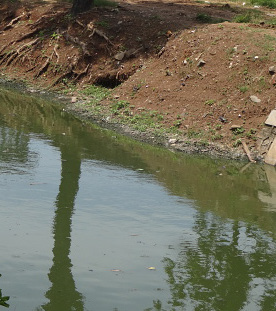Mr. Brandon Tufano is a geologist with 9 years of experience in the environmental consulting industry. He has broad technical experience planning and conducting site investigations focused on a variety of chemicals of concern, including PCBs, chlorobenzene, per- and polyfluoroalkyl substances (PFAS), petroleum hydrocarbons, volatile organic compounds (VOCs), semivolatile organic compounds (SVOCs), and metals. Mr. Tufano has successfully designed, implemented, and performed Phase II environmental site assessments, remedial investigations/pre-design investigations, light nonaqueous-phase liquid (LNAPL) recovery pilot studies, and soil, groundwater, surface water, and indoor air sampling events and evaluations. In addition, he has experience with PFAS sampling techniques, various drilling techniques, injection programs, and sediment site cleanups.
M.S., Geology, Binghamton University, Binghamton, New York, 2016
B.S., Geology, Keystone College, La Plume, Pennsylvania, 2014
Hazardous Waste Operations and Emergency Response 40-Hour Certification (2016; refreshers 2017 through 2025)
Hazardous Waste Operations and Emergency Response 8-Hour Supervisor Certification (2024)
Occupation Safety and Health Administration 10-Hour Construction Safety Training (2016)
Transportation Worker Identification Credential (2022−2027)
Member of the National Groundwater Association
Brandon C. Tufano Senior Scientist
Mr. Brandon Tufano is a geologist with 9 years of experience in the environmental consulting industry. He has broad technical experience planning and conducting site investigations focused on a variety of chemicals of concern, including PCBs, chlorobenzene, per- and polyfluoroalkyl substances (PFAS), petroleum hydrocarbons, volatile organic compounds (VOCs), semivolatile organic compounds (SVOCs), and metals. Mr. Tufano has successfully designed, implemented, and performed Phase II environmental site assessments, remedial investigations/pre-design investigations, light nonaqueous-phase liquid (LNAPL) recovery pilot studies, and soil, groundwater, surface water, and indoor air sampling eve...
Mr. Brandon Tufano is a geologist with 9 years of experience in the environmental consulting industry. He has broad technical experience planning and conducting site investigations focused on a variety of chemicals of concern, including PCBs, chlorobenzene, per- and polyfluoroalkyl substances (PFAS), petroleum hydrocarbons, volatile organic compounds (VOCs), semivolatile organic compounds (SVOCs), and metals. Mr. Tufano has successfully designed, implemented, and performed Phase II environmental site assessments, remedial investigations/pre-design investigations, light nonaqueous-phase liquid (LNAPL) recovery pilot studies, and soil, groundwater, surface water, and indoor air sampling events and evaluations. In addition, he has experience with PFAS sampling techniques, various drilling techniques, injection programs, and sediment site cleanups.

Using Accurate Sample Elevations to Characterize Sediment Conditions with 3-Dimensional Modeling
Resource
September 26 2023

